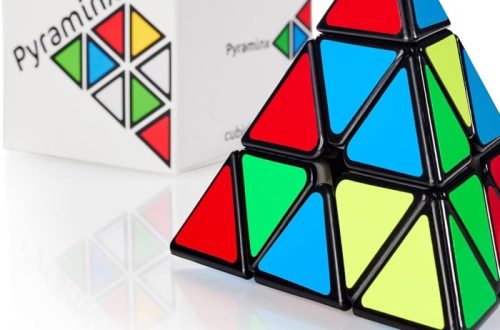Part 1: Evolution of Quadcopters
Historical Development:
Quadcopters, once confined to the realm of experimental aviation, have soared to prominence as versatile aerial platforms. This evolution is a testament to the rapid advancements in materials science, electronics, and propulsion systems.
Early quadcopters were often cumbersome and unreliable, limited by heavy components and rudimentary flight control systems. However, the advent of lightweight carbon fiber materials and powerful, compact electric motors revolutionized the industry. These technological breakthroughs enabled the development of smaller, more agile drones capable of intricate maneuvers and extended flight times.
Miniaturization and Payload Capacity:
The rapid evolution of quadcopter technology has led to the development of increasingly compact yet powerful aerial platforms. These advancements have significantly expanded the capabilities of quadcopters, enabling them to carry heavier payloads while maintaining impressive flight performance.

Smaller, lighter quadcopters have become indispensable tools for photographers and videographers, allowing them to capture stunning aerial footage and images with ease. Equipped with high-resolution cameras and advanced stabilization systems, these drones can access previously unreachable locations and perspectives.
In the agricultural sector, quadcopters are revolutionizing crop monitoring and management practices. Equipped with specialized sensors and cameras, these drones can efficiently survey vast fields, identify potential issues such as pests, diseases, and nutrient deficiencies, and even apply targeted treatments. This data-driven approach helps farmers optimize resource utilization and maximize yields.
Part 2: Enhanced Flight Capabilities
One of the most significant advancements in quadcopter technology is the dramatic improvement in their agility and maneuverability. This is primarily due to breakthroughs in flight control systems and motor technologies.
Advanced Flight Control Systems:
Precision Flight Control: Modern flight control systems, powered by advanced algorithms and high-performance microprocessors, enable precise control over the quadcopter’s pitch, roll, yaw, and throttle. This allows for intricate maneuvers such as flips, rolls, and loops.
Real-Time Adjustments: These systems can quickly adapt to changing environmental conditions, such as wind gusts or sudden obstacles, making the quadcopter more stable and responsive.
GPS-Assisted Navigation: GPS integration enhances the quadcopter’s ability to maintain a stable flight path and return to its home point, even in challenging conditions.

High-Performance Motors:
Powerful and Efficient Motors: Powerful electric motors provide the necessary thrust for rapid acceleration, high speeds, and dynamic maneuvers.
Precise Control: Advanced motor control algorithms allow for fine-tuned adjustments in motor speed and direction, enabling precise hovering and smooth transitions between flight modes.
Lightweight and Durable: Modern motors are designed to be lightweight and durable, contributing to the overall performance and flight time of the quadcopter.
Extended Flight Duration
Part 3: Sensing and Perception
Quadcopters, once a mere hobbyist’s toy, have evolved into powerful tools with a wide range of applications, from industrial inspections to environmental monitoring. This transformation is largely due to the integration of advanced sensors and intelligent algorithms.
Sensor Fusion: A Multisensory Approach
One of the key advancements in quadcopter technology is the integration of multiple sensors to provide a comprehensive understanding of the environment. By combining data from various sensors, quadcopters can make more accurate and informed decisions.
LiDAR (Light Detection and Ranging): LiDAR sensors emit laser beams and measure the time it takes for the reflected light to return, enabling the creation of detailed 3D maps of the surrounding environment. This technology is particularly useful for autonomous navigation, obstacle avoidance, and precision landing.
Thermal Imaging: Thermal cameras detect infrared radiation emitted by objects, allowing quadcopters to identify heat signatures. This capability is invaluable for applications such as search and rescue, firefighting, and infrastructure inspection.
Multispectral Cameras: Multispectral cameras capture images at multiple wavelengths, beyond the visible spectrum. This enables them to detect specific features, such as plant health, soil moisture, and pollution levels.

Object Detection and Avoidance: Enhancing Safety and Autonomy
As quadcopters become more sophisticated, their ability to detect and avoid obstacles is crucial for safe and autonomous operation. Advanced computer vision algorithms, combined with powerful processors, enable quadcopters to recognize objects in real-time and take appropriate actions.
Real-time Object Detection: By analyzing the data from cameras and other sensors, quadcopters can identify objects such as people, animals, vehicles, and obstacles in their flight path.
Obstacle Avoidance Maneuvers: Once an object is detected, the quadcopter can execute various avoidance maneuvers, such as changing course, ascending, or descending.
Collision Avoidance Systems: These systems use a combination of sensors, including LiDAR, ultrasonic sensors, and cameras, to detect potential collisions and take immediate action to prevent them.
Part 4: Autonomous Operations and AI
The integration of artificial intelligence (AI) algorithms has revolutionized the capabilities of quadcopters, propelling them into a new era of autonomous flight. By harnessing the power of AI, these aerial vehicles can now navigate complex environments with unprecedented precision and efficiency.
AI algorithms empower quadcopters to autonomously plan optimal flight paths, taking into account factors such as wind conditions, battery life, and mission objectives. This intelligent planning enables them to cover vast distances, reach remote locations, and execute intricate maneuvers with minimal human intervention.
Furthermore, AI-powered obstacle avoidance systems equip quadcopters with the ability to perceive and react to their surroundings in real-time. Advanced sensors, such as cameras and LiDAR, provide the necessary data for AI algorithms to identify and circumvent obstacles, ensuring safe and reliable flight operations.
Machine Learning and Data Analytics:
Quadcopters, equipped with advanced sensors and cameras, are becoming powerful data-gathering tools. By harnessing the power of machine learning, these aerial vehicles can extract valuable insights from the vast amounts of data they collect. One significant application lies in environmental research. Quadcopters equipped with high-resolution cameras can capture aerial images of forests, wetlands, and coastal areas. By analyzing these images using machine learning algorithms, researchers can monitor deforestation, track wildlife populations, and assess the impact of climate change on ecosystems.

In the realm of infrastructure maintenance, quadcopters can inspect bridges, power lines, and pipelines with unprecedented efficiency and accuracy. Machine learning algorithms can analyze the captured images to detect signs of wear and tear, corrosion, or structural damage, enabling timely repairs and preventing potential disasters.
Part 5: Industrial and Commercial Applications
Aerial Photography and Filmmaking:
Quadcopters, with their nimble flight capabilities and advanced camera technology, have revolutionized the landscape of aerial photography and cinematography. Equipped with high-resolution cameras capable of capturing stunning images and videos, these aerial platforms offer a unique perspective that was once unattainable.
One of the key advantages of quadcopters is their ability to access previously inaccessible locations. They can effortlessly soar above urban skylines, traverse rugged terrains, and capture breathtaking aerial vistas. This versatility empowers photographers and filmmakers to create dynamic and visually striking content that captivates audiences. Moreover, advanced stabilization technology ensures smooth and steady footage, even in windy conditions. Gimbal systems counteract vibrations and camera shake, resulting in professional-quality images and videos. This level of stability was once only achievable with expensive and cumbersome aerial rigs.
Infrastructure Inspection:
Quadcopters have emerged as invaluable tools for infrastructure inspection, revolutionizing the way we assess and maintain critical assets. These versatile aerial platforms offer a safe, efficient, and cost-effective solution for accessing otherwise challenging and hazardous areas.
By equipping quadcopters with high-resolution cameras and advanced sensors, inspectors can capture detailed images and videos of pipelines, power lines, bridges, and building facades. These aerial perspectives provide a comprehensive view of infrastructure conditions, allowing for early detection of potential issues such as corrosion, wear and tear, and structural damage.

One of the primary advantages of using quadcopters for infrastructure inspection is the elimination of the need for costly and time-consuming scaffolding or manual climbing. Drones can easily navigate complex terrains, fly through tight spaces, and hover precisely above target areas, reducing the risk of accidents and injuries.
Furthermore, the data collected by quadcopters can be analyzed using advanced software to generate detailed 3D models and reports. This enables engineers and maintenance teams to make informed decisions about repair and replacement schedules, optimizing resource allocation and minimizing downtime.
Part 6: Future Prospects and Challenges
Emerging Technologies:
The future of quadcopters is shaped by ongoing developments in areas such as 5G connectivity, swarming capabilities, and advanced autonomy, opening new frontiers in aerial robotics.
Regulatory Framework and Safety:
As quadcopters become more integrated into airspace and urban environments, addressing regulatory challenges and ensuring safety will be crucial for their widespread acceptance and adoption.
This article delves into the advancements in quadcopter technology, highlighting their enhanced flight capabilities, sensing and perception capabilities, autonomy, diverse applications, and the challenges and opportunities that lie ahead in the field of aerial robotics.




